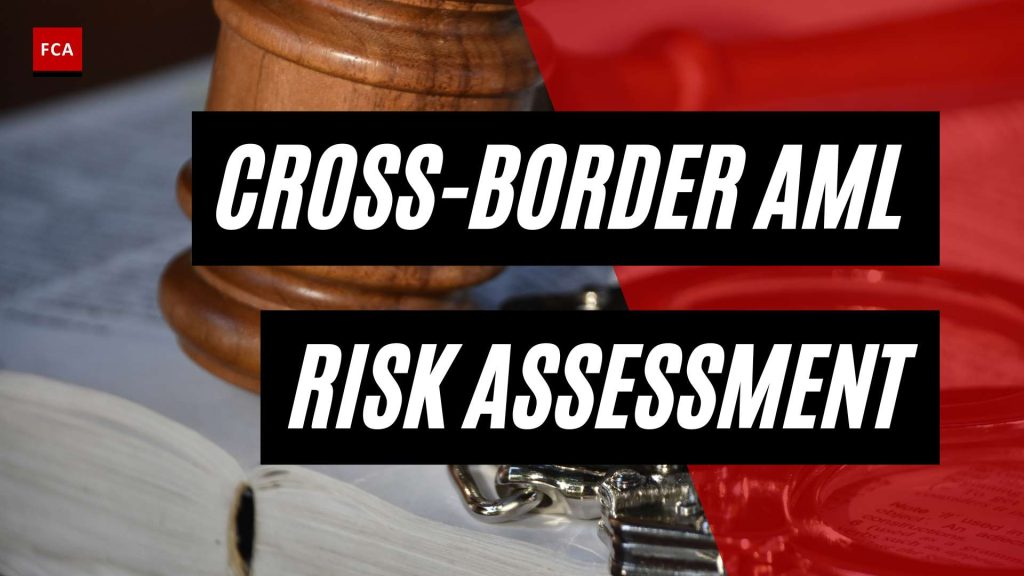Cross-Border AML Monitoring: An Introduction
Cross-border AML monitoring plays a crucial role in safeguarding the global financial system from illicit activities such as money laundering and terrorist financing. As financial transactions increasingly transcend international borders, it becomes imperative for financial institutions to have robust mechanisms in place to detect and prevent suspicious activities.
The Importance of Cross-Border AML Monitoring
Effective cross-border AML monitoring is essential in combating money laundering, which poses significant risks to the integrity of the global financial system. It is estimated that approximately 2-5% of global GDP, amounting to $800 billion to $2 trillion, is laundered annually, with a substantial portion involving cross-border transactions (Tookitaki). This highlights the magnitude of the problem and underscores the importance of robust AML measures for financial institutions operating internationally.
By implementing comprehensive cross-border AML monitoring systems, financial institutions can detect and report suspicious transactions, thereby fulfilling their regulatory obligations and contributing to the overall global efforts against money laundering and terrorist financing. Furthermore, effective AML monitoring helps protect institutions from reputational damage and potential legal and financial penalties.
Challenges in Cross-Border AML Monitoring
Cross-border AML monitoring presents numerous challenges for financial institutions. One significant challenge is navigating diverse regulatory requirements across different jurisdictions. Each country has its own set of AML regulations and reporting requirements, making it difficult to establish a standardized approach. Financial institutions must invest in resources and expertise to ensure compliance with multiple regulatory frameworks (Tookitaki).
Another challenge is the evolving nature of money laundering techniques. Criminals constantly adapt their methods to exploit vulnerabilities in the financial system. Traditional rule-based transaction monitoring systems may not effectively screen cross-border transactions due to their linear approach, leading to high false-positive rates and missing out on money laundering activities. To address this, financial institutions are increasingly adopting a risk-based approach and leveraging advanced technologies such as artificial intelligence (AI) and machine learning (ML) to enhance their AML monitoring capabilities (Tookitaki).
In the next sections, we will explore the regulatory frameworks, technology advancements, collaboration efforts, compliance challenges, best practices, and the future of cross-border AML monitoring. By understanding these aspects, financial institutions can strengthen their AML compliance programs and contribute to a more secure global financial landscape.
Regulatory Frameworks for Cross-Border AML Monitoring
To effectively combat money laundering and ensure global financial integrity, various regulatory frameworks have been established. These frameworks govern cross-border AML (anti-money laundering) monitoring and compliance efforts. Two noteworthy regulatory frameworks are the Fourth and Fifth Anti-Money Laundering Directives in the European Union and the USA PATRIOT Act and the Bank Secrecy Act in the United States.
The Fourth and Fifth Anti-Money Laundering Directives in the European Union
In the European Union (EU), the Fourth Anti-Money Laundering Directive (4AMLD) and the Fifth Anti-Money Laundering Directive (5AMLD) play a significant role in regulating cross-border AML monitoring and compliance. These directives impose obligations on financial institutions to implement robust AML and KYC (know your customer) measures to prevent money laundering and terrorist financing.
Under the 4AMLD, financial institutions are required to conduct customer due diligence, monitor transactions, and report suspicious activities. The 5AMLD builds upon the 4AMLD and introduces additional measures to strengthen the EU’s AML framework. It expands the scope of AML regulations to include virtual currencies, prepaid cards, and beneficial ownership registers. These directives aim to harmonize AML regulations across EU member states, enhance transparency, and improve cross-border cooperation in AML efforts.
The USA PATRIOT Act and the Bank Secrecy Act in the United States
In the United States, the USA PATRIOT Act and the Bank Secrecy Act (BSA) are crucial legislations governing cross-border AML monitoring. The USA PATRIOT Act, passed in response to the 9/11 attacks, grants authorities greater powers to detect and prevent money laundering and terrorist financing activities. It requires financial institutions to establish robust AML compliance programs, conduct customer due diligence, and report suspicious transactions.
The BSA, enacted in 1970, forms the foundation of AML regulations in the United States. It requires financial institutions to maintain records of certain transactions, implement internal controls, and report suspicious activities to the Financial Crimes Enforcement Network (FinCEN). These regulatory frameworks aim to strengthen the US financial system’s resilience against money laundering and illicit financial activities.
By implementing these regulatory frameworks, both the European Union and the United States seek to combat money laundering, protect the integrity of their financial systems, and promote global cooperation in AML efforts.
To effectively navigate cross-border AML monitoring, financial institutions and compliance professionals must stay informed about the requirements outlined in these regulatory frameworks. They should regularly assess their AML compliance programs, collaborate with partners, and adapt to evolving global guidelines. By doing so, they can contribute to the global fight against money laundering and ensure the integrity of financial transactions across borders.
Enhancing Cross-Border AML Monitoring with Technology
To effectively monitor cross-border transactions and combat money laundering activities, financial institutions are increasingly leveraging advanced technologies, such as artificial intelligence (AI) and machine learning (ML). These technologies offer significant advantages in improving the efficiency and effectiveness of cross-border AML monitoring.
Leveraging Artificial Intelligence and Machine Learning
Traditional rule-based transaction monitoring systems used in AML frameworks may not be able to effectively screen cross-border transactions due to their linear approach. This can lead to high false-positive rates and potentially miss out on detecting suspicious activities related to money laundering. Adopting a risk-based approach with machine learning models for AML monitoring can help address these challenges (Tookitaki).
By leveraging AI and ML technologies, financial institutions can enhance their transaction monitoring systems for cross-border AML. These technologies enable institutions to analyze massive amounts of data and detect patterns that may indicate potential money laundering activities. The use of AI and ML can significantly reduce false positives and increase the detection of suspicious transactions, improving the overall effectiveness of cross-border AML monitoring (Tookitaki).
AI and ML can also contribute to the identification of complex money laundering patterns and schemes. These technologies have the ability to analyze vast and diverse datasets, enabling financial institutions to uncover hidden connections and identify suspicious activities that may occur through cross-border payments. By leveraging AI and ML, financial institutions can comply with AML regulations more effectively and combat illicit activities associated with cross-border transactions (Tookitaki).
Advanced Technologies for Detecting Money Laundering Patterns
In addition to AI and ML, advanced technologies play a crucial role in enhancing the detection of money laundering patterns in cross-border transactions. These technologies utilize sophisticated algorithms and data analysis techniques to identify suspicious activities that may go unnoticed through traditional monitoring methods.
Financial institutions can employ data analytics tools and machine learning algorithms to analyze transactional data and identify patterns that may indicate potential money laundering. These advanced technologies have the capability to detect anomalies, identify high-risk transactions, and flag suspicious activities more accurately and efficiently. By leveraging these technologies, financial institutions can stay ahead of evolving money laundering techniques and strengthen their cross-border AML monitoring efforts (Tookitaki).
To summarize, the use of AI and ML technologies in cross-border AML monitoring offers significant benefits to financial institutions. By leveraging these technologies, institutions can analyze large volumes of data, detect suspicious activities, and improve overall AML compliance. Additionally, advanced technologies, such as data analytics and machine learning algorithms, provide enhanced capabilities for detecting money laundering patterns in cross-border transactions. These technological advancements contribute to the effectiveness and efficiency of cross-border AML monitoring efforts, helping financial institutions mitigate compliance risks and combat illicit activities associated with cross-border transactions.
Collaboration and Information Sharing in Cross-Border AML Monitoring
In the complex world of cross-border AML monitoring, collaboration and information sharing play a crucial role in combating money laundering and terrorist financing. Given the global nature of financial crimes, it is essential for countries and organizations to work together to create a strong defense against illicit activities. Two key aspects of collaboration in cross-border AML monitoring are the role of Financial Intelligence Units (FIUs) and international cooperation in AML and CTF (Counter Terrorism Financing) efforts.
The Role of Financial Intelligence Units
Financial Intelligence Units (FIUs) are specialized government agencies responsible for collecting, analyzing, and disseminating financial intelligence related to suspected money laundering and terrorist financing activities. These units serve as the central hubs for receiving and processing suspicious transaction reports from financial institutions and other reporting entities.
FIUs play a crucial role in cross-border AML monitoring by facilitating the exchange of information between countries. They act as the primary contact points for international cooperation, enabling the sharing of intelligence and expertise in combating financial crimes. Through collaboration with their counterparts in different jurisdictions, FIUs can identify complex money laundering networks that span across borders.
One notable example of international collaboration in the AML field is the Egmont Group. Established in 1995, the Egmont Group is a global network of 164 FIUs that fosters cooperation and information sharing among its members. This network serves as a platform for FIUs to exchange financial intelligence, best practices, and technical expertise, enhancing the effectiveness of AML efforts worldwide.
International Cooperation in AML and CTF Efforts
Effective cross-border AML monitoring requires strong international cooperation and coordination among countries. Financial crimes often exploit differences in regulatory regimes across borders, making collaboration essential in identifying and preventing illicit activities.
International cooperation involves harmonizing AML and CTF standards, sharing resources, and exchanging information among countries. By aligning their efforts, countries can collectively combat the increasing sophistication of money laundering techniques and terrorist financing.
The collaboration between countries extends beyond FIUs. Governments, regulatory bodies, law enforcement agencies, and financial institutions actively participate in international forums and initiatives to strengthen global AML and CTF efforts. These collaborations aim to establish consistent frameworks, enhance regulatory compliance, and improve the exchange of information and expertise (Tookitaki).
For example, the Fourth and Fifth Anti-Money Laundering Directives in the European Union and the USA PATRIOT Act and Bank Secrecy Act in the United States are regulatory frameworks that emphasize the need for international cooperation in combating money laundering. These frameworks encourage the sharing of suspicious transaction reports, customer due diligence information, and other relevant data across borders to detect and prevent financial crimes.
International collaboration in AML and CTF efforts is an ongoing process that necessitates continuous dialogue, cooperation, and innovation. The sharing of resources, expertise, and best practices is crucial in developing effective strategies to combat money laundering and terrorist financing on a global scale.
As the landscape of financial crimes evolves, it is imperative for countries and organizations to strengthen their collaborative efforts, leverage emerging technologies, and adapt their regulatory frameworks to effectively address the challenges posed by cross-border money laundering. By working together, countries can create a more cohesive and robust system to safeguard the global financial system from illicit activities.
Compliance Challenges in Cross-Border AML Monitoring
When it comes to cross-border AML monitoring, financial institutions and regulatory bodies face several compliance challenges. These challenges arise due to the diverse regulatory requirements across different jurisdictions and the need to address legal and confidentiality issues. Overcoming these challenges is crucial for enhancing the effectiveness of cross-border AML monitoring efforts.
Navigating Diverse Regulatory Requirements
One of the primary compliance challenges in cross-border AML monitoring is navigating the diverse regulatory requirements across different jurisdictions. Each country has its own set of cross-border AML regulations and money laundering laws, making it challenging for financial institutions to create a standardized approach.
Financial institutions operating across borders need to be aware of and comply with the specific AML regulations of each jurisdiction they operate in. This involves understanding the reporting requirements, risk assessment frameworks, customer due diligence procedures, and other regulatory obligations that may vary from one country to another. Keeping up with these changing regulatory landscapes and ensuring compliance can be a complex and resource-intensive process.
To navigate these diverse regulatory requirements effectively, financial institutions need to establish robust international AML compliance programs. This includes conducting thorough AML risk assessments, implementing comprehensive customer due diligence processes, and establishing ongoing AML monitoring mechanisms tailored to the specific requirements of each jurisdiction.
Addressing Legal and Confidentiality Issues
Another significant compliance challenge in cross-border AML monitoring is addressing legal and confidentiality issues. Financial institutions and regulatory bodies often face obstacles related to sharing customer information and conducting investigations across different jurisdictions.
Conflicting privacy laws, data protection regulations, and legal frameworks can hinder the efficient exchange of information necessary for effective cross-border AML monitoring. Financial institutions need to navigate these legal complexities to ensure compliance while also protecting customer privacy and confidentiality.
Addressing these challenges requires close collaboration between financial institutions, regulatory bodies, and law enforcement agencies. Establishing protocols and frameworks for information sharing that adhere to the legal requirements of each jurisdiction is crucial. Additionally, leveraging advanced technologies such as secure data encryption and anonymization techniques can help protect the privacy of sensitive information while facilitating the necessary exchange of data for AML monitoring purposes.
Financial institutions should also establish robust internal controls and policies to ensure compliance with legal and confidentiality requirements. This includes implementing mechanisms to safeguard customer data and conducting regular audits to ensure adherence to applicable laws and regulations.
By addressing these compliance challenges, financial institutions can strengthen their cross-border AML monitoring efforts and contribute to the global fight against money laundering and other financial crimes. It is essential to stay informed and up-to-date with global AML compliance standards and collaborate with partners across jurisdictions to ensure a unified and effective approach to combating financial crime.
Best Practices for Cross-Border AML Monitoring
To ensure effective cross-border AML monitoring, compliance professionals in the financial industry should follow certain best practices. Staying informed about global guidelines and complying with regulatory requirements is essential, as is assessing and collaborating with partners to maintain a robust anti-financial crime approach. By implementing these best practices, organizations can enhance their AML compliance efforts and mitigate the risks associated with cross-border transactions.
Staying Informed and Complying with Global Guidelines
Staying up to date with global AML guidelines and regulations is crucial for organizations engaged in cross-border transactions. Compliance teams should regularly monitor regulatory changes and updates from reputable sources such as the Financial Action Task Force (FATF) and local regulatory authorities. This ensures that organizations are aware of the latest compliance requirements and can adjust their processes accordingly.
Financial institutions operating in the cross-border payments sector need to comply with licensing, registration, AML/CTF, and sanctions laws and regulations in all jurisdictions where they operate. It is important to consider both global guidelines set by the FATF and local nuances to maintain compliance (ComplyAdvantage).
By following global guidelines, organizations can establish standardized AML compliance practices across their operations. This helps ensure consistency and reduces the risk of non-compliance with international AML regulations.
Assessing and Collaborating with Partners
In the cross-border payments industry, assessing and collaborating with partners is crucial for effective AML compliance. Organizations should conduct due diligence on their partners, including legacy firms, overseas agents, or correspondent banks, to ensure their anti-financial crime approaches align with relevant laws and regulations. By partnering with reputable institutions that have robust compliance programs, organizations can minimize the risk of exposure to illicit activities (ComplyAdvantage).
Regularly evaluating the effectiveness of partner institutions’ AML compliance programs is essential. This can be done through periodic risk assessments and ongoing monitoring of their compliance practices. Collaboration should extend beyond just assessing partners; organizations should also foster open communication channels to share information and best practices related to AML compliance.
Collaboration can also extend to international efforts in combating money laundering and terrorist financing. Financial Intelligence Units (FIUs) play a vital role in facilitating information sharing and cooperation between countries. Groups like the Egmont Group, which consists of 164 financial intelligence units, promote collaboration and support the fight against financial crimes (Tookitaki).
By assessing and collaborating with partners, organizations can strengthen their AML compliance framework and establish a network of trusted entities working together to combat money laundering and other financial crimes.
By adhering to these best practices, organizations can navigate the complexities of cross-border AML monitoring with greater confidence. Staying informed about regulatory requirements and collaborating with partners ensures that organizations are equipped to identify and mitigate the risks associated with money laundering and other illicit activities. Additionally, leveraging technology solutions, such as Regtech, can further enhance compliance efforts and streamline AML monitoring processes. As the global landscape evolves, continuous adaptation and adherence to best practices will be key to maintaining effective cross-border AML monitoring.
The Future of Cross-Border AML Monitoring
As the landscape of financial transactions continues to evolve, so does the need for effective cross-border AML monitoring. To stay ahead of money laundering and illicit financial activities, financial institutions and regulatory authorities must adapt and embrace innovative solutions. In this section, we will explore the role of Regtech solutions and long-term strategies for effective compliance in the future of cross-border AML monitoring.
The Role of Regtech Solutions
Regtech, or regulatory technology, has emerged as a powerful tool in the fight against financial crime. Regtech solutions leverage cutting-edge technologies to streamline compliance processes, enhance efficiency, and improve the accuracy of AML monitoring. These solutions automate various tasks, such as customer due diligence, transaction monitoring, and regulatory reporting, reducing manual efforts and increasing operational effectiveness.
By harnessing the power of artificial intelligence (AI) and machine learning (ML), Regtech solutions can analyze vast amounts of data in real-time, detecting complex patterns and anomalies that might indicate potential money laundering activities. These advanced technologies enable financial institutions to identify suspicious transactions more efficiently and minimize false positives, thereby improving the overall effectiveness of AML monitoring efforts.
Implementing Regtech solutions also offers the advantage of scalability and adaptability. As regulatory requirements evolve, these solutions can be easily updated to incorporate new rules and regulations, ensuring ongoing compliance. Additionally, Regtech solutions provide audit trails and comprehensive reporting capabilities, facilitating transparency and accountability in AML compliance efforts.
Long-term Strategies for Effective Compliance
To navigate the ever-changing landscape of cross-border AML regulations, financial institutions need to adopt long-term strategies that prioritize compliance and risk mitigation. The following are key considerations for developing effective long-term AML compliance strategies:
-
Staying Informed and Complying with Global Guidelines: Financial institutions must stay updated on global AML compliance standards, such as those set by the Financial Action Task Force (FATF). By regularly monitoring and incorporating these guidelines into their compliance programs, institutions can ensure they are well-equipped to address evolving AML risks.
-
Assessing and Collaborating with Partners: Collaboration and information sharing with partners, including legacy firms, overseas agents, or correspondent banks, are essential in maintaining effective AML compliance. Financial institutions should assess their partners’ anti-financial crime approaches to ensure alignment with relevant laws and regulations. This includes conducting due diligence, ongoing monitoring, and fostering open lines of communication.
-
Embracing Continuous Improvement: Successful compliance teams in the cross-border payments industry prioritize long-term goals over short-term objectives. They develop a strategic vision, establish a long-term technology roadmap, assess vendors, manage stakeholders, and plan budgets to support the transition towards automated processes. Continuous improvement efforts should focus on enhancing the effectiveness and efficiency of AML monitoring.
By adopting Regtech solutions and embracing long-term strategies for effective compliance, financial institutions can strengthen their cross-border AML monitoring capabilities. These approaches empower institutions to keep pace with regulatory developments, leverage advanced technologies, and proactively combat financial crime on a global scale. As the future unfolds, staying vigilant and proactive in navigating international compliance will be paramount to success in the ever-evolving landscape of cross-border transactions.








